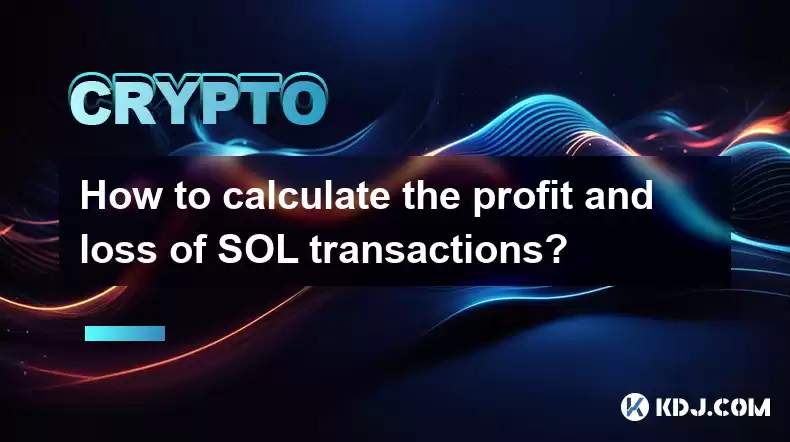-
 Bitcoin
Bitcoin $117400
-0.46% -
 Ethereum
Ethereum $3768
0.60% -
 XRP
XRP $3.551
2.09% -
 Tether USDt
Tether USDt $1.000
0.00% -
 Solana
Solana $203.2
11.30% -
 BNB
BNB $770.9
1.92% -
 USDC
USDC $0.9999
0.01% -
 Dogecoin
Dogecoin $0.2709
-0.02% -
 Cardano
Cardano $0.9024
4.49% -
 TRON
TRON $0.3139
0.60% -
 Hyperliquid
Hyperliquid $45.60
-1.41% -
 Stellar
Stellar $0.4730
-1.34% -
 Sui
Sui $4.025
2.15% -
 Chainlink
Chainlink $19.79
2.19% -
 Hedera
Hedera $0.2724
-2.39% -
 Avalanche
Avalanche $25.93
3.05% -
 Bitcoin Cash
Bitcoin Cash $524.0
-1.83% -
 Shiba Inu
Shiba Inu $0.00001558
0.50% -
 Litecoin
Litecoin $116.7
-0.30% -
 UNUS SED LEO
UNUS SED LEO $8.996
0.00% -
 Toncoin
Toncoin $3.334
1.83% -
 Polkadot
Polkadot $4.506
0.34% -
 Uniswap
Uniswap $10.99
4.83% -
 Ethena USDe
Ethena USDe $1.001
0.03% -
 Pepe
Pepe $0.00001461
3.17% -
 Monero
Monero $320.3
-1.01% -
 Bitget Token
Bitget Token $4.935
0.36% -
 Dai
Dai $0.9998
0.00% -
 Aave
Aave $322.4
-1.25% -
 Bittensor
Bittensor $455.6
9.33%
How to calculate the profit and loss of SOL transactions?
To calculate profit or loss from SOL transactions, subtract the total cost from the total revenue, and don't forget to account for transaction fees.
Apr 20, 2025 at 04:29 pm

Introduction to SOL Transactions
SOL, the native cryptocurrency of the Solana blockchain, is known for its high throughput and low transaction fees. When engaging in SOL transactions, it's crucial to understand how to calculate your profit and loss accurately. This article will guide you through the process, ensuring you have a clear understanding of your financial outcomes from trading or investing in SOL.
Understanding the Basics of SOL Profit and Loss
Before diving into the calculations, it's important to grasp the basic concepts of profit and loss. Profit is the positive gain you make from a transaction, calculated as the selling price minus the buying price. Loss, on the other hand, is the negative outcome, where the selling price is less than the buying price. For SOL transactions, these calculations can be affected by factors such as transaction fees and market volatility.
Calculating Profit from SOL Transactions
To calculate the profit from a SOL transaction, follow these steps:
- Determine the Buying Price: Note the price at which you purchased SOL. For example, if you bought 10 SOL at $100 each, your total cost would be $1,000.
- Determine the Selling Price: Note the price at which you sold SOL. If you sold those 10 SOL at $120 each, your total revenue would be $1,200.
- Calculate the Profit: Subtract the total cost from the total revenue. In this case, $1,200 - $1,000 = $200. Your profit from this transaction would be $200.
It's essential to consider transaction fees when calculating profit. If you paid a fee of $10 to buy and $10 to sell, your total fees would be $20. Thus, your net profit would be $200 - $20 = $180.
Calculating Loss from SOL Transactions
Calculating loss follows a similar process:
- Determine the Buying Price: As before, if you bought 10 SOL at $100 each, your total cost would be $1,000.
- Determine the Selling Price: If you sold those 10 SOL at $80 each, your total revenue would be $800.
- Calculate the Loss: Subtract the total revenue from the total cost. In this case, $1,000 - $800 = $200. Your loss from this transaction would be $200.
Again, consider transaction fees. If you paid $10 to buy and $10 to sell, your total fees would be $20. Thus, your net loss would be $200 + $20 = $220.
Using a Spreadsheet for SOL Profit and Loss Calculations
For those who engage in multiple SOL transactions, using a spreadsheet can simplify the process of calculating profit and loss. Here's how you can set up a basic spreadsheet:
- Create Columns: Label columns for Date, Transaction Type (Buy/Sell), Amount of SOL, Price per SOL, Total Cost/Total Revenue, and Fees.
- Enter Data: Input your transaction data into the respective columns. For example, enter the date, type of transaction, amount of SOL, price per SOL, and any fees incurred.
- Calculate Totals: Use formulas to calculate the total cost or total revenue. For instance, if you bought 10 SOL at $100 each, the formula in the Total Cost column would be
=C2*D2, where C2 is the amount of SOL and D2 is the price per SOL. - Calculate Profit/Loss: Subtract the total cost from the total revenue in a separate column. If you sold 10 SOL at $120 each, the formula would be
=F2-E2, where F2 is the total revenue and E2 is the total cost. - Account for Fees: Subtract the total fees from the profit or add them to the loss in another column. The formula would be
=G2-H2, where G2 is the profit/loss and H2 is the total fees.
Advanced Considerations for SOL Profit and Loss
When dealing with SOL transactions, there are advanced considerations to keep in mind:
- Staking Rewards: If you stake your SOL, you may receive additional SOL as rewards. These rewards should be included in your profit calculations.
- Airdrops and Forks: Occasionally, you might receive free SOL through airdrops or as a result of blockchain forks. These should also be considered when calculating your overall profit and loss.
- Tax Implications: Depending on your jurisdiction, you may need to report your SOL transactions for tax purposes. Profits from SOL transactions might be subject to capital gains tax, while losses could be used to offset other gains.
Frequently Asked Questions
Q: Can I use online calculators for SOL profit and loss calculations?
A: Yes, there are several online calculators designed specifically for cryptocurrency profit and loss calculations. These tools can be useful for quick assessments, but always double-check the results with manual calculations to ensure accuracy.
Q: How do I handle partial sales of SOL in my calculations?
A: For partial sales, calculate the profit or loss for each portion separately. If you bought 10 SOL at $100 each and sold 5 SOL at $120 each, calculate the profit for those 5 SOL as $120 - $100 = $20 per SOL, totaling $100 profit. Repeat this for the remaining SOL if sold at a different price.
Q: What if I receive SOL as payment for goods or services?
A: If you receive SOL as payment, the value at the time of receipt should be considered your buying price. When you later sell this SOL, use the selling price to calculate profit or loss, accounting for any fees as usual.
Q: Are there any tools specifically designed for tracking SOL transactions?
A: Yes, there are several blockchain explorers and wallet applications that offer built-in tools for tracking SOL transactions. Examples include Solana Explorer and Phantom Wallet, which can help you monitor your transactions and calculate profit and loss more efficiently.
Disclaimer:info@kdj.com
The information provided is not trading advice. kdj.com does not assume any responsibility for any investments made based on the information provided in this article. Cryptocurrencies are highly volatile and it is highly recommended that you invest with caution after thorough research!
If you believe that the content used on this website infringes your copyright, please contact us immediately (info@kdj.com) and we will delete it promptly.
- XRP, Bitcoin, Ripplecoin: Navigating the Crypto Landscape in 2025
- 2025-07-22 20:30:13
- Cardano Ecosystem Watch: Can PayFi Token Remittix Trigger an ADA Overtake?
- 2025-07-22 20:50:13
- JasmyCoin Price Forecast: Chart Analysis Points to Potential Surge
- 2025-07-22 20:55:13
- Trump, Bitcoin, and Altcoins: A New York Minute on Crypto's Political Play
- 2025-07-22 21:00:13
- Shiba Inu, XRP, and Little Pepe: Navigating the Meme Coin Mania in NYC
- 2025-07-22 21:30:13
- Bitcoin's Role in IntelBroker's Takedown: A New Era of Crypto Crime Enforcement
- 2025-07-22 21:10:15
Related knowledge

What is Chainlink (LINK)?
Jul 22,2025 at 02:14am
Understanding Chainlink (LINK): The Decentralized Oracle NetworkChainlink is a decentralized oracle network designed to bridge the gap between blockch...

What is Avalanche (AVAX)?
Jul 22,2025 at 08:35am
What is Avalanche (AVAX)?Avalanche (AVAX) is a decentralized, open-source blockchain platform designed to support high-performance decentralized appli...

What is Polkadot (DOT)?
Jul 19,2025 at 06:35pm
Understanding the Basics of Polkadot (DOT)Polkadot (DOT) is a multi-chain network protocol designed to enable different blockchains to transfer messag...

What is Monero (XMR)?
Jul 21,2025 at 10:07am
What is Monero (XMR)?Monero (XMR) is a decentralized cryptocurrency designed to provide enhanced privacy and anonymity for its users. Unlike Bitcoin a...

How to add indicators to Ethereum chart on TradingView?
Jul 19,2025 at 07:15am
What Is an Ethereum Chart on TradingView?The Ethereum chart on TradingView is a visual representation of the price movement of Ethereum (ETH) over a s...

How to use the Ichimoku Cloud for ETH?
Jul 18,2025 at 09:56pm
Understanding the Ichimoku Cloud and Its ComponentsThe Ichimoku Cloud, also known as Ichimoku Kinko Hyo, is a versatile technical analysis tool that p...

What is Chainlink (LINK)?
Jul 22,2025 at 02:14am
Understanding Chainlink (LINK): The Decentralized Oracle NetworkChainlink is a decentralized oracle network designed to bridge the gap between blockch...

What is Avalanche (AVAX)?
Jul 22,2025 at 08:35am
What is Avalanche (AVAX)?Avalanche (AVAX) is a decentralized, open-source blockchain platform designed to support high-performance decentralized appli...

What is Polkadot (DOT)?
Jul 19,2025 at 06:35pm
Understanding the Basics of Polkadot (DOT)Polkadot (DOT) is a multi-chain network protocol designed to enable different blockchains to transfer messag...

What is Monero (XMR)?
Jul 21,2025 at 10:07am
What is Monero (XMR)?Monero (XMR) is a decentralized cryptocurrency designed to provide enhanced privacy and anonymity for its users. Unlike Bitcoin a...

How to add indicators to Ethereum chart on TradingView?
Jul 19,2025 at 07:15am
What Is an Ethereum Chart on TradingView?The Ethereum chart on TradingView is a visual representation of the price movement of Ethereum (ETH) over a s...

How to use the Ichimoku Cloud for ETH?
Jul 18,2025 at 09:56pm
Understanding the Ichimoku Cloud and Its ComponentsThe Ichimoku Cloud, also known as Ichimoku Kinko Hyo, is a versatile technical analysis tool that p...
See all articles

























































































